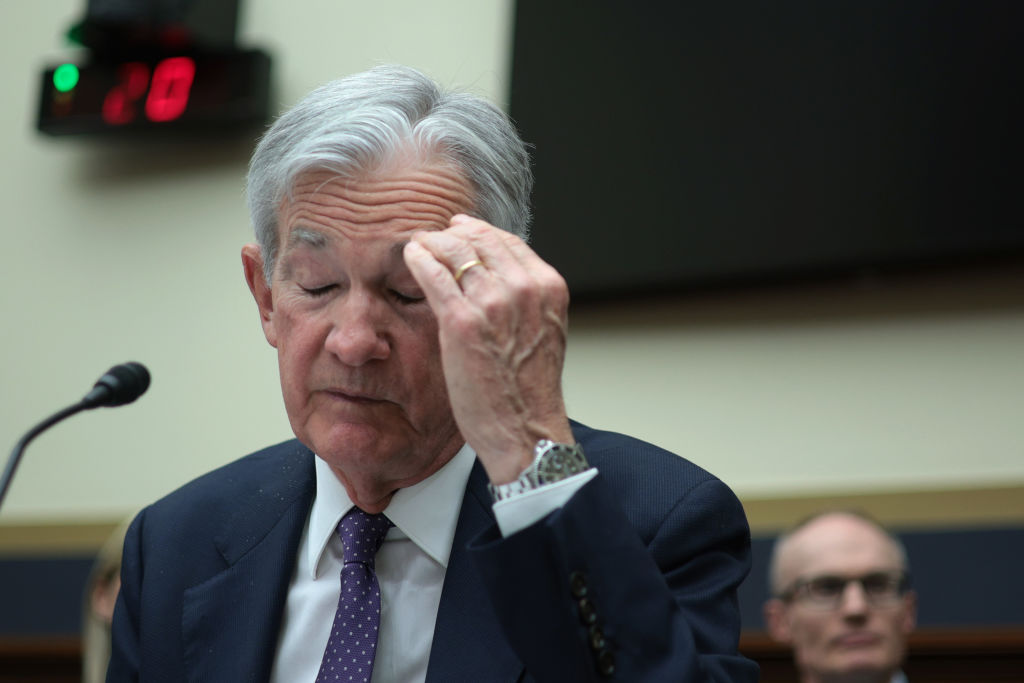Gold hit a record of $1,920 an ounce in September 2011. Since then, it has drifted between $1,600-$1,800. So has it peaked? And if further gains are in store, what will trigger them?
The overall backdrop remains bullish. Gold remains a hedge against turmoil and inflation, and we could well need the insurance. There are plenty of potential geopolitical triggers for a rush into gold, including wars in the Middle East and the ongoing American budget crisis. The euro crisis could also flare up at any time; the elections in Italy and political turmoil in Spain are additional flashpoints.
But the main issue is that central banks have engaged in "massive money printing" and inflation-adjusted interest rates are negative: "These are the best possible conditions for a gold rally," as Fred Hickey of the High-Tech Strategist, a newsletter, points out. All this should fuel concern about high eventual inflation (usually defined as 5%-plus), as central banks have never been much good at siphoning off liquidity from the system as recoveries set in.
MoneyWeek
Subscribe to MoneyWeek today and get your first six magazine issues absolutely FREE

Sign up to Money Morning
Don't miss the latest investment and personal finances news, market analysis, plus money-saving tips with our free twice-daily newsletter
Don't miss the latest investment and personal finances news, market analysis, plus money-saving tips with our free twice-daily newsletter
A closely related point is that money printing is weakening currencies across the world, and this burnishes gold's appeal as a store of value: it is a traditional currency that can't be debased by printing. Central banks have become net buyers of gold in recent years and are repatriating their holdings an "implicit acknowledgement" of gold's "evolution as a legitimate form of money", says Deutsche Bank. As for that catalyst, it may have arrived.
Longview Economics, a consultancy, notes that the driver of investment flows and the gold price has been the expansion of the US Federal Reserve's balance sheet (as it buys assets with printed money). The sideways drift in the gold price has coincided with the period since the end of the second round of quantitative easing (QE2) in mid-2011.
Since last autumn the Fed has embarked on QE3, but only since January 2013 have overall purchases accelerated to $85bn a month. That's a similar pace to QE1 and QE2, implying a rally in the gold price. Even if this proves wrong, however, and gold does not start to move until inflation begins to take off, as Bill Gross of Pimco expects, we would still hang on to the yellow metal. The path of least resistance is still up.
Get the latest financial news, insights and expert analysis from our award-winning MoneyWeek team, to help you understand what really matters when it comes to your finances.
MoneyWeek is written by a team of experienced and award-winning journalists, plus expert columnists. As well as daily digital news and features, MoneyWeek also publishes a weekly magazine, covering investing and personal finance. From share tips, pensions, gold to practical investment tips - we provide a round-up to help you make money and keep it.
-
 How cancelling unused direct debits could boost your pension by £37,000
How cancelling unused direct debits could boost your pension by £37,000A new year refresh of your spending could save you money and help boost your pension pot.
-
 NS&I cuts interest rates on 8 savings accounts
NS&I cuts interest rates on 8 savings accountsNS&I will now offer less attractive interest rates for customers wishing to lock their savings away to grow for one, two, three or five years.
-
 The challenge with currency hedging
The challenge with currency hedgingA weaker dollar will make currency hedges more appealing, but volatile rates may complicate the results
-
 Can Donald Trump fire Jay Powell – and what do his threats mean for investors?
Can Donald Trump fire Jay Powell – and what do his threats mean for investors?Donald Trump has been vocal in his criticism of Jerome "Jay" Powell, chairman of the Federal Reserve. What do his threats to fire him mean for markets and investors?
-
 Freetrade’s new easy-access funds aim to beat top savings rates
Freetrade’s new easy-access funds aim to beat top savings ratesFreetrade has launched an easy-access exchange traded fund (ETF) range - here’s how the ETFs work and how they compare to the savings market
-
 Go for value stocks to insure your portfolio against shocks, says James Montier
Go for value stocks to insure your portfolio against shocks, says James MontierInterview James Montier, at investment management group GMO, discusses value stocks and slow-burn Minsky moments with MoneyWeek.
-
 Where do we go from here?
Where do we go from here?Features A new series of interviews from MoneyWeek
-
 As China reopens, why pick an income strategy?
As China reopens, why pick an income strategy?Advertisement Feature Yoojeong Oh, Investment Manager, abrdn Asian Income Fund Limited
-
 Income in the USA
Income in the USAAdvertisement Feature Fran Radano, manager on The North American Income Trust
-
 The challenge of turbulent markets
The challenge of turbulent marketsAdvertisement Feature Today, ISA investors face one of the most challenging economic environments seen in recent years. However, good companies can still thrive, even in the toughest economic conditions. That’s why BlackRock’s fund managers focus on these businesses when they’re looking for investment opportunities.

